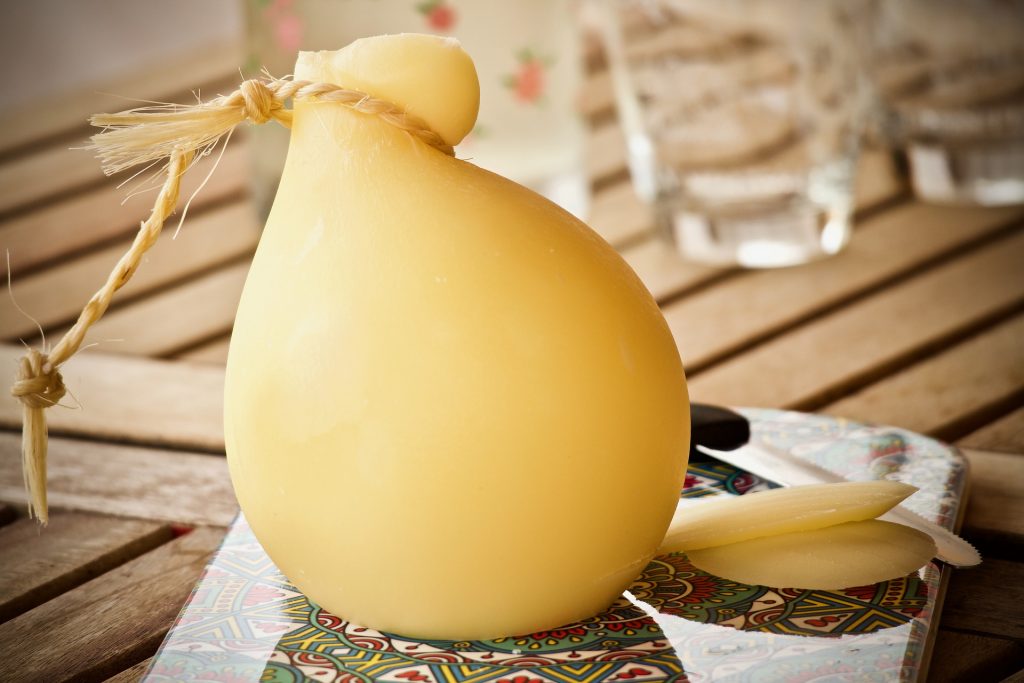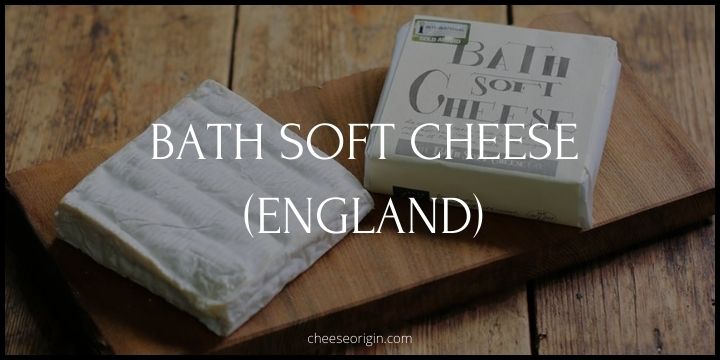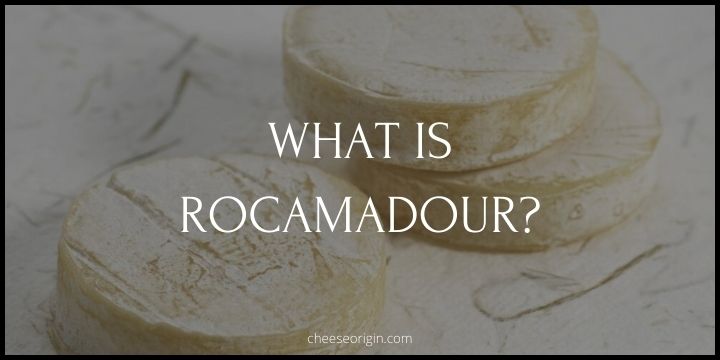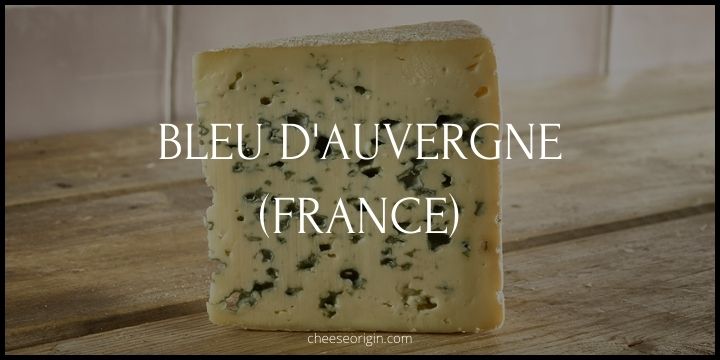What is Provolone? A Masterclass in Flavor and Versatility

In the vast and varied world of cheese, Provolone holds a special place. This versatile Italian delight, known for its distinctive shape and dynamic flavor profile, has charmed cheese enthusiasts worldwide.
But what is it about Provolone that sets it apart from other cheeses? How can you best enjoy this semi-hard dairy gem and use it to elevate your culinary creations?
Welcome to this guide, where we’ll journey into the heart of Italy to unravel the secrets of this iconic cheese.
You’ll discover its rich history, understand the nuances in its production, and explore the many exciting ways to weave it into your meals.
Whether you’re a seasoned cheese connoisseur or a curious foodie, this guide aims to deepen your appreciation for Provolone and inspire new culinary adventures.
So, let’s embark on this cheesy exploration together and unlock the delicious potential of Provolone.
Quick Facts About Provolone
| Fact | Description |
|---|---|
| Origin | Italy, specifically the regions of Lombardy and Veneto |
| Milk Source | Cow’s milk |
| Texture | Semi-hard to hard, depending on aging |
| Flavor | Mild to sharp, depending on aging |
| Color | Pale yellow |
| Aging Process | Aged for at least 2 months, but some versions are aged for up to a year |
| Protected Designation of Origin | Provolone Valpadana and Provolone del Monaco have PDO status in the European Union |
| Historical Origins | The production of Provolone dates back to the 19th century |
| Uses | Eaten as is, used in sandwiches, or melted in cooking |
What is Provolone?
Provolone is a type of Italian cheese that originates from Southern Italy. It’s a semi-hard cheese made from cow’s milk. The flavor of Provolone can range from mild and sweet to sharp, depending on how long it has been aged.
There are two main types of Provolone: Provolone Dolce, which is aged for 2-3 months and has a mild, sweet taste, and Provolone Piccante, which is aged for more than four months and has a sharper taste.
The cheese is often shaped into a pear or cylindrical shape during its production process. Provolone is versatile and can be used in a variety of dishes including sandwiches, pasta, and pizza, or it can be served with fruit and crackers as part of a cheese platter.
What makes Provolone cheese different?
One of the key differences that set Provolone apart is its production method. Like Mozzarella, it is a plastic curd cheese, which means the curd is mixed with heated whey and kneaded to a smooth, semi-soft consistency.
This cheese is known for its smooth texture and mild smoky flavor. It comes in two distinct varieties: Dolce (sweet) and Piccante (sharp), providing different taste profiles for cheese lovers.
Provolone is also unique in its shape. It is usually made in a rounded tube or ball shape, sometimes featuring an inedible wax rind. The term “Provolone” actually translates to “large Provola,” referring to its pear-shaped soft, pasta filata cheese counterpart.
Modern Provolone is a full-fat cow’s milk cheese primarily produced in the Po River Valley regions of Lombardy and Veneto. This geographical distinction adds to the uniqueness of Provolone as the local environment contributes to the taste and quality of the cheese.
In essence, the devoted artisanship, dedicated craftsmanship, and total dedication to a single craft make Provolone a truly distinctive cheese.
What is the difference between Provolone and Mozzarella?
| Provolone | Mozzarella | |
|---|---|---|
| Origin | Northern Italy | Southern Italy |
| Milk Used | Usually cow’s milk | Traditionally buffalo milk |
| Texture & Aging | Semi-hard, aged for months | Soft, consumed fresh |
| Flavor | Mild to sharp, depending on aging | Mild and milky |
| Shape & Size | Often pear or cone-shaped, larger | Typically round, smaller |
| Typical Usage | Sandwiches, grated over pasta, eaten alone | Pizza topping, Caprese salads |
>> Click here to read our in-depth guide to Mozzarella
Is Provolone a healthy cheese?
Provolone is a good source of essential nutrients such as protein, calcium, vitamin A, and phosphorus.
- Protein and calcium are vital for bone health and muscle function.
- Vitamin A supports healthy vision, skin, and immune system functioning.
- Phosphorus aids in tissue growth and repair.
However, like most cheeses, Provolone is also high in saturated fats and sodium. High intake of these can lead to health issues such as heart disease and high blood pressure.
Therefore, it’s important to consume it in moderation.
Nutritional Value of Provolone Cheese per serving (approximately 1 ounce):
- Calories: 98
- Protein: 7 grams
- Fat: 8 grams
- Saturated Fat: 5 grams
- Carbohydrates: 0.6 grams
- Calcium: Significant amounts
In comparison to some other cheeses like Swiss cheese, Provolone has fewer calories, making it a potentially better option for those watching their caloric intake.
While Provolone cheese does have health benefits, it’s crucial to balance its consumption with other nutrient-rich foods and maintain an overall balanced diet.
Why is Provolone cheese so delicious?

The deliciousness of Provolone cheese can be attributed to several factors:
- Aging process: Provolone is an aged cheese, which allows it to develop rich and complex flavors over time. The longer it’s aged, the more intense the flavor becomes.
- Type of milk: Provolone is typically made from cow’s milk, which has a naturally sweet and creamy flavor. This contributes to the overall taste of the cheese.
- Texture: Has a semi-hard texture that is smooth and chewy. This texture contributes to the enjoyment of eating the cheese.
- Fat content: Like many cheeses, Provolone has a high fat content. Fat is known to enhance the flavor of foods, making them taste richer and more satisfying.
- Versatility: The flavor profile works well in a variety of dishes, from sandwiches to pasta, and even on its own. Its ability to melt well also makes it a great choice for cooking.
- Flavor profile: Depending on its aging, Provolone can have a range of flavors from mild and sweet to sharp and tangy. This variety can cater to different taste preferences.
The truth is, taste is subjective, and what one person finds delicious, another might not. But for those who enjoy it, these are some reasons why Provolone cheese can be so delicious.
Provolone Nutrition Facts
The key nutritional of Provolone cheese (every 100g):
| Nutrient | Quantity |
|---|---|
| Calories | 463 kcal |
| Protein | 34g |
| Total Fat | 35g |
| Sodium | 210mg |
| Total Carbohydrate | 2.8g |
| Dietary Fiber | 0g |
| Sugars | 0g |
What does Provolone cheese taste like? Tasting notes
Provolone cheese has a complex flavor profile that changes as it ages, offering a variety of tasting notes.
| Young Provolone | Aged Provolone | |
|---|---|---|
| Age | 2-3 months | More than 4 months |
| Texture | Smooth, creamy | Firmer |
| Flavor | Mild, delicate, slightly sweet and buttery | Sharper, more robust, nutty, tangy |
| Color | Pale yellow | Deeper yellow |
In terms of texture, Provolone is semi-hard and smooth, becoming more firm and crumbly as it ages.
It melts well, which makes it a popular choice for cooking. When melted, it becomes creamy and rich, enhancing its inherent flavors.
Whether enjoyed fresh or melted, Provolone offers a unique and enjoyable tasting experience.
Provolone pairing guide
What food pairs well with provolone cheese?
| Food Category | Pairs Well with Provolone Cheese |
|---|---|
| Fruits | Figs, Grapes, Lime, Pears, Cranberries, Apples, Raspberry, Blackberry, Olives |
| Vegetables | Cauliflower, Potatoes, Carrots, Red Bell Peppers, Tomatoes, Onions |
| Meats | Prosciutto, Ham, Salami, Spicy Sopressatas |
| Other Foods | Bread, Cracker, Orange Marmalade, Parmesan Cheese |
What beverage pairs well with provolone cheese?
| Beverage Category | Pairs Well with Provolone Cheese |
|---|---|
| Wine | Chianti, Cabernet Sauvignon, Merlot, Zinfandel, Pinot Noir |
| Beer | Pale Ale, Stout, Lager |
| Non-Alcoholic | Apple Cider, Grape Juice, Cranberry Juice |
How do Italians eat provolone?
In Italy, Provolone cheese is typically enjoyed in a variety of ways:
- Appetizer: Provolone is often served as part of an antipasto platter, alongside other cheeses, cured meats, olives, and marinated vegetables.
- Sandwiches: Italians use provolone in sandwiches, often paired with ham or salami.
- Cooking Ingredient: Provolone is also used in cooking, especially in baked pasta dishes, stuffed peppers, or on top of pizza.
- Grilled or Melted: In some regions, provolone is grilled or melted and served with crusty bread. A popular dish is “Provolone al forno” where the cheese is baked until it’s bubbly and brown.
- Cheese Board: Provolone can be served on a cheese board with fruits like pears and apples, or with a drizzle of honey.
- Straight-up: Of course, many Italians also enjoy eating slices of provolone cheese just as they are, savoring the flavor and texture of the cheese on its own.
The pros and cons of Provolone
Benefits:
- Versatile: Provolone is a versatile cheese that can be used in a variety of dishes, including sandwiches, pizzas, pasta, and salads.
- Flavorful: It has a distinct, full-bodied flavor that can range from mild to sharp, depending on how long it has been aged. This makes it appealing to a wide range of palates.
- Rich in Nutrients: Provolone is a good source of protein and provides important nutrients, such as calcium, vitamin A, and B vitamins.
- Melts Well: Provolone cheese melts well, making it a great choice for grilled sandwiches or baked dishes.
Drawbacks:
- High in Sodium: This cheese can also be high in sodium, which might not be suitable for those managing their sodium intake.
Also read: Savor the Flavor: 20 Cheeses with the Least Lactose
Best Provolone substitutes
Sure, here’s the requested information in a table format:
| Provolone Substitute | Description |
|---|---|
| Cheddar | This cow’s milk cheese is semi-hard and can provide a similar taste to Provolone, although the texture may be slightly different. |
| Muenster | A milder cheese that still delivers on flavor. As it ages, it doesn’t become as sharp as provolone which makes it a good substitute. |
| Havarti | Another semi-soft cheese with a buttery aroma and taste, similar to Provolone. |
| Monterey Jack | Known for its mild flavor and great melting properties, making it a good substitute for Provolone in melted dishes. |
| Low Moisture Mozzarella | This Italian cheese has a mild and creamy flavor with a stringy texture when melted, similar to Provolone. |
| Fontina | An Italian cow’s milk cheese that melts well and has a mild, nutty flavor that makes it a great substitute for Provolone. |
| Scamorza | An Italian cheese that’s similar to mozzarella but with a stronger, more savory flavor. It’s a good substitute in baked dishes. |
| Parmesan | A hard, granular cheese that’s great for toppings and can bring a slightly different, but delicious flavor to dishes. |
| Gouda | Gouda is known for its rich, unique flavor and smooth texture. It can be a good substitute for Provolone in many dishes. |
| Edam | A Dutch semi-hard cheese with a mildly sweet and nutty flavor. It’s less creamy than Provolone but can work as a substitute in some dishes. |
History of Provolone
Provolone, a cheese that has become a staple in Italian cuisine and beyond, traces its roots back to Southern Italy. The name ‘prova’ in Italian, which refers to a round-shaped cheese in the Campanian dialect, is thought to be the origin of the name ‘Provolone’.
This versatile cheese was born in the Basilicata region of southern Italy but quickly outgrew its regional confines due to its popularity. It was the Cistercian monks in the territory between the rivers Lambro and Adda who can be credited with the early production of this cheese.
The significant production shift occurred in the second half of the 19th century when Provolone Valpadana cheese was created in the Po Valley. This was the result of a successful fusion between the dairy culture of “spun paste” and the area’s existing cheesemaking practices. Today, the majority of Provolone production takes place in the Po Valley region, particularly Lombardy and Veneto.
Provolone can be made from cow’s milk, buffalo milk, or a combination of the two. Like Mozzarella, it is a plastic curd cheese, meaning the curd is mixed with heated whey. Some versions of Provolone are even smoked for additional flavor.
As we explore the history of Provolone, we come to appreciate not just its taste, but also the rich culture and tradition that shaped this beloved cheese. From humble beginnings in southern Italy to international acclaim, Provolone truly stands as a testament to the enduring appeal of Italian cheesemaking.
Frequently Asked Questions
1. Is provolone cheese hard to digest?
For most people, Provolone cheese is not particularly hard to digest.
However, it does contain lactose, a sugar that some people’s bodies struggle to break down. If you’re lactose intolerant, you may experience digestive discomfort after consuming Provolone.
On the other hand, aged Provolone, like other aged cheeses, contains less lactose compared to fresh cheese due to the aging and fermentation process, which could make it easier to digest for some.
2. Is provolone cheese inflammatory?
According to a 2019 study in the Journal of Dairy Science, certain types of cheese, including provolone, may have anti-inflammatory properties.
However, it’s also important to note that provolone, like many cheeses, is high in saturated fats. Some research suggests that these fats can promote inflammatory processes in the body.
Therefore, while provolone cheese may not directly cause inflammation, its high fat content could potentially contribute to inflammatory responses, particularly in individuals who are sensitive to dietary fats.
As with any food, moderation is key, and it’s crucial to consider your individual dietary needs and responses.
Also read:
- Pecorino Romano: The Ultimate Guide to Italy’s Age-Old Cheese
- The Art of Blue Vein Cheese: A Journey Through Flavor and Texture
- A Guide to Havarti: The Star Cheese of the Culinary World
- Savor the Flavor: 20 Cheeses with the Least Lactose
- Best Wine and Cheese Pairings: The Ultimate Guide
- Cheese Curds: The Unsung Heroes of the Dairy World
- What Kind of Cheese is Used on Nachos?
- What Pairs Well with Cheddar: The Ultimate Guide





